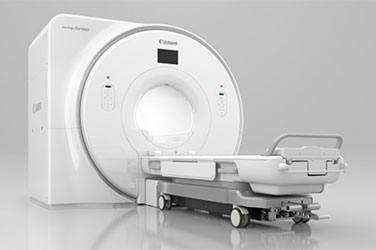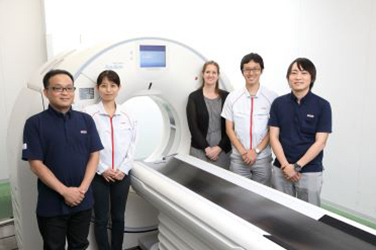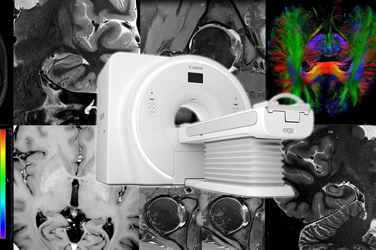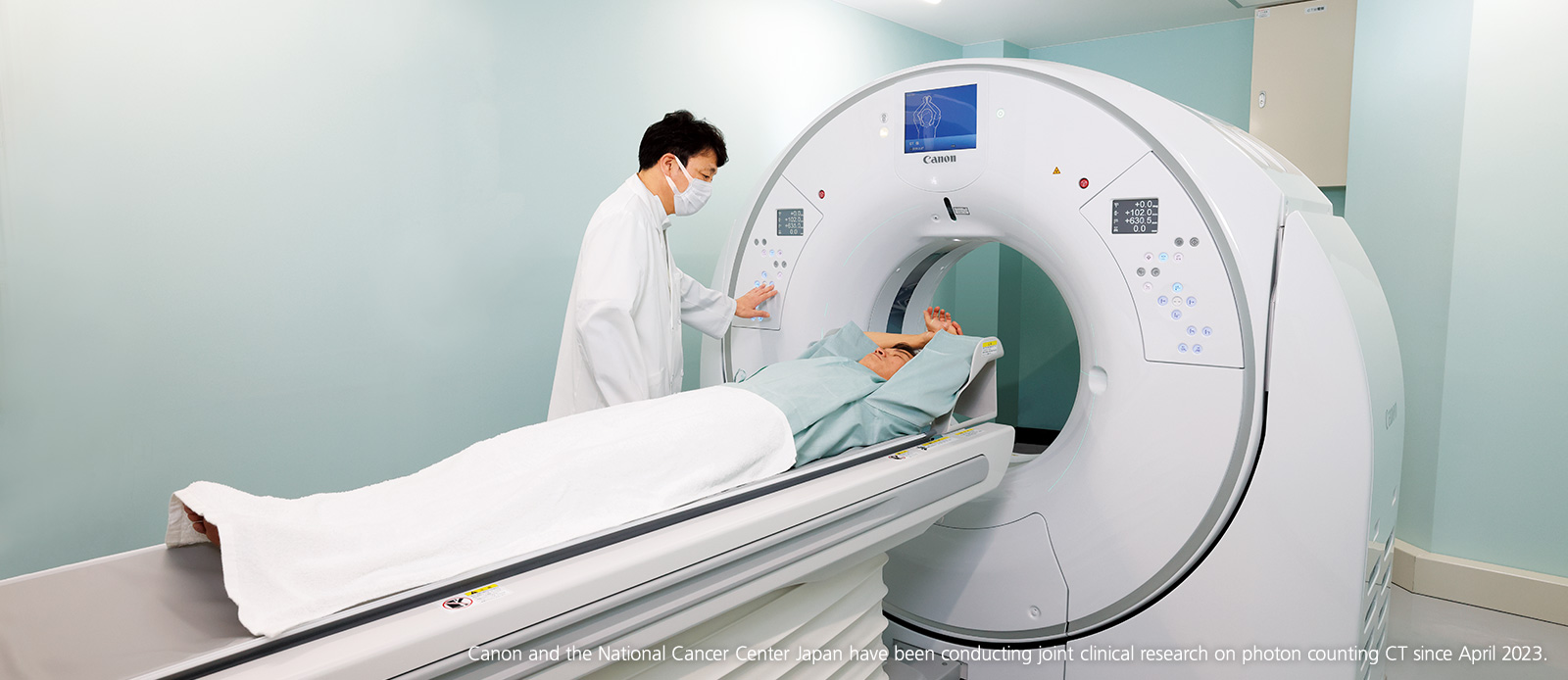

Next-generation CT That Allows Materials in the Body to be Accurately Identified
Photon Counting CT
Interest in the early detection and prompt treatment of diseases has increased over the years. CT systems, which feature short examination times and widespread availability at many hospitals, are therefore attracting a great deal of attention. In particular, there are high expectations for photon counting CT, which promises to improve CT performance in many ways.
October 16, 2023
Growing Expectations for CT systems
With the rapid aging of society, the demand for health promotion and disease prevention is greater than ever.
Computed tomography (CT) has been introduced in many hospitals because of its advantages such as shorter examination times, a wider range of applications (including head, heart, and tumors), and clearer images as compared to magnetic resonance imaging (MRI). On the other hand, because CT systems employ X-rays, the risks of radiation exposure must be kept in mind.
For these reasons, the introduction of photon counting CT (PCCT), which can provide higher-resolution images while reducing exposure dose, is eagerly anticipated.
PCCT can even Identify Materials in the Body While Minimizing the Exposure Dose
Canon is currently conducting clinical research on PCCT, which generates diagnostic images by counting individual photons, the smallest quanta of light. Conventional CT and PCCT can be compared using the analogy of collecting raindrops in a bucket. Conventional CT measures the total amount of water after collecting all the raindrops (photons) of various colors in the bucket (Figure 1). In this measurement method, the photons cannot be counted directly and only approximate numbers are obtained, which leads to measurement errors in determining the number of photons.
Mechanism of photon counting (Figure1)
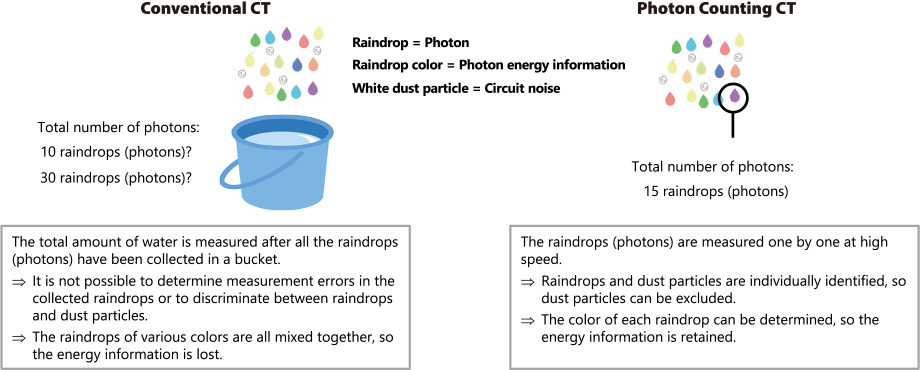
The colors of the raindrops represent the energy information of the photons, which differ from one other. But the raindrops of various colors are all mixed together in the bucket, so the energy information of the individual photons cannot be evaluated.
PCCT, on the other hand, measures the raindrops (photons) one by one at high speed. By measuring the raindrops individually, it is possible to discriminate between raindrops and dust particles (which represent circuit noise). This allows image noise to be reduced, resulting in clearer images with lower exposure.
In addition, the color of each raindrop can be identified, so the energy information for each photon can be determined. Every material has unique energy response characteristics in terms of the degree of attenuation of the photons passing through the material (a gradual decrease due to photon absorption, dispersion, etc.).
Precise information concerning the materials in the body can therefore be obtained from the acquired energy information.
PCCT employing this photon counting approach can be useful for identifying whether a mass is a high-grade tumor or for determining the amount of residual contrast medium.
By improving diagnostic efficiency, we aim to reduce the burden on patients and to ensure more effective treatment planning.
Detector Utilizing Special Semiconductors, the Key to Photon Counting
PCCT technology is not really new, and the technical principle has been known since the 1970s. In PCCT, the performance of the detector (which receives the X-rays) is extremely important. Canon uses special semiconductors made of cadmium, zinc, and telluride (CZT) in its detectors.
It is known that CZT has significant technical advantages for use in CT detectors, but the mass production of CZT detectors involves a number of difficult challenges which must be overcome. In particular, it is very difficult to manufacture semiconductors of consistent quality while achieving the high level of performance required for PCCT.
The breakthrough in overcoming these challenges is the technology developed by Redlen Technologies Inc., which joined the Canon Group in 2021. Redlen Technologies Inc.’s expertise in the manufacture of CZT semiconductors ensures consistent quality, allowing photon counting detectors to be introduced in actual clinical practice.
Promoting Patient-centric Healthcare from Prevention to Long-term Prognosis
It is also expected that PCCT, which has the advantage of low exposure dose, will gain widespread acceptance in preventive care. Its higher diagnostic accuracy and its ability to accurately identify materials in the body can lead to quicker decision-making and more effective treatment planning. With regard to prognosis, PCCT can be very helpful in deciding whether or not further treatment is necessary, such as in patients with cancer. PCCT is also expected to contribute to health maintenance and promotion thanks to its wide range of applications from prevention to long-term prognosis.
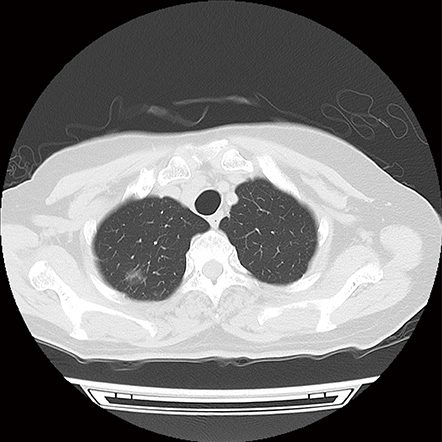
Image acquired by PCCT
Canon and the National Cancer Center Japan began joint clinical research on PCCT in April 2023 to assess its effectiveness and safety in actual medical equipment. By conducting advanced clinical research, developing new diagnostic methods, and verifying their clinical usefulness, we are working to promote the rapid practical application of PCCT.


